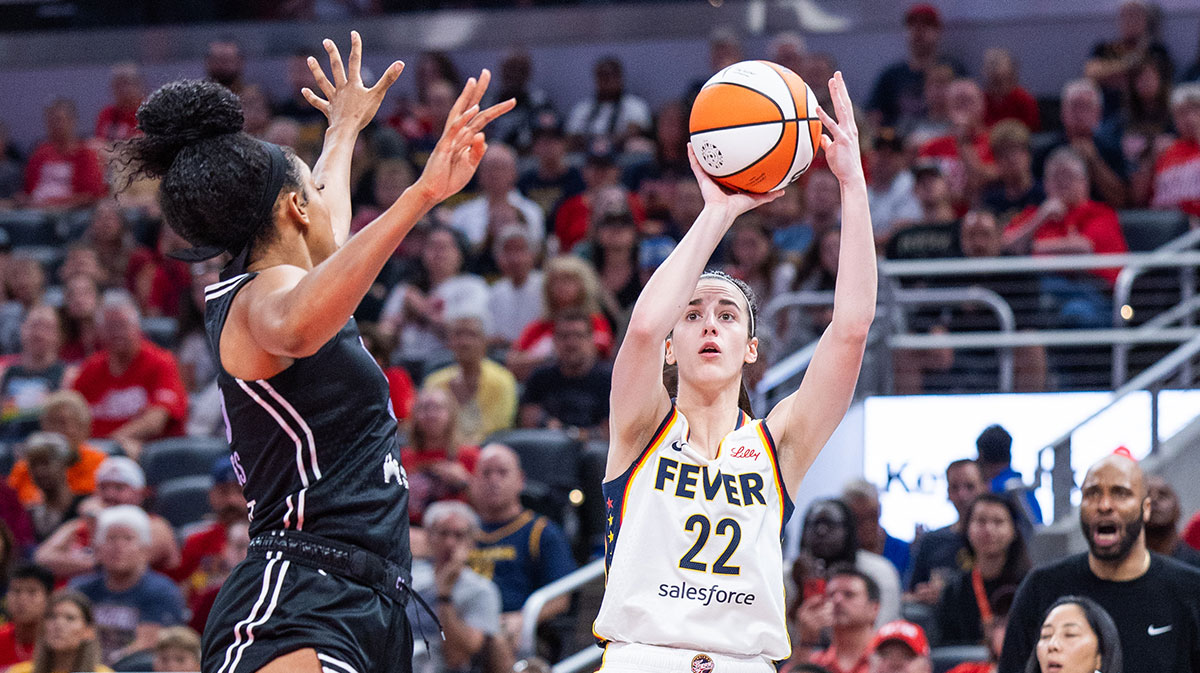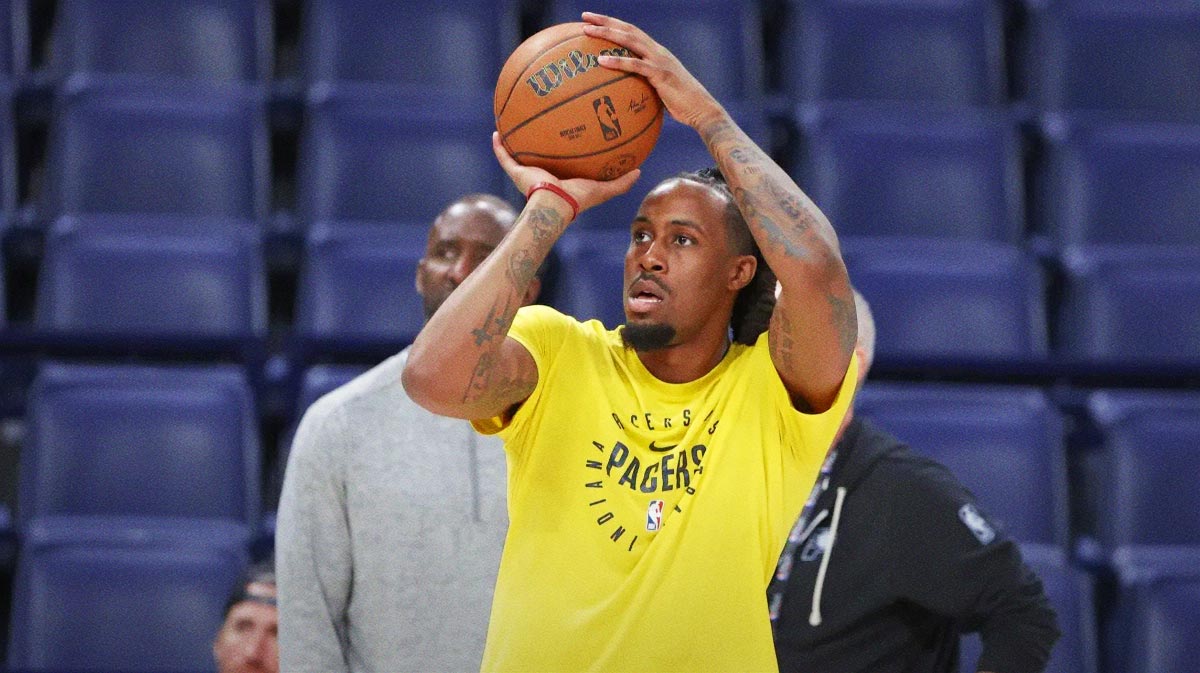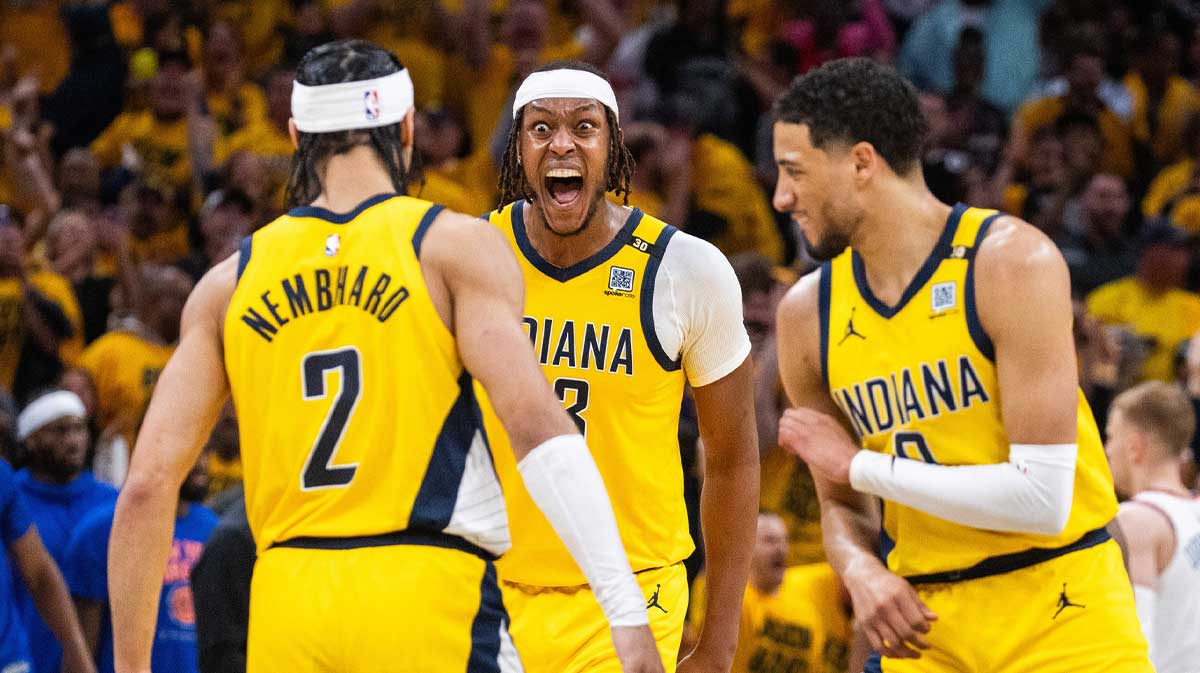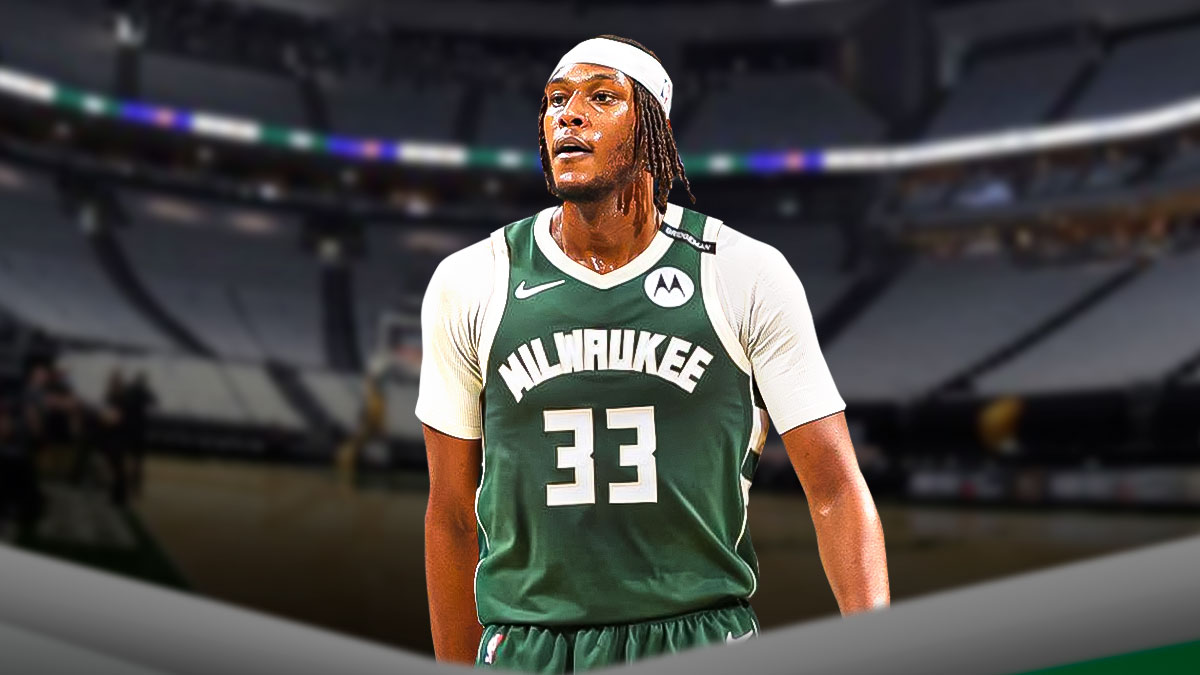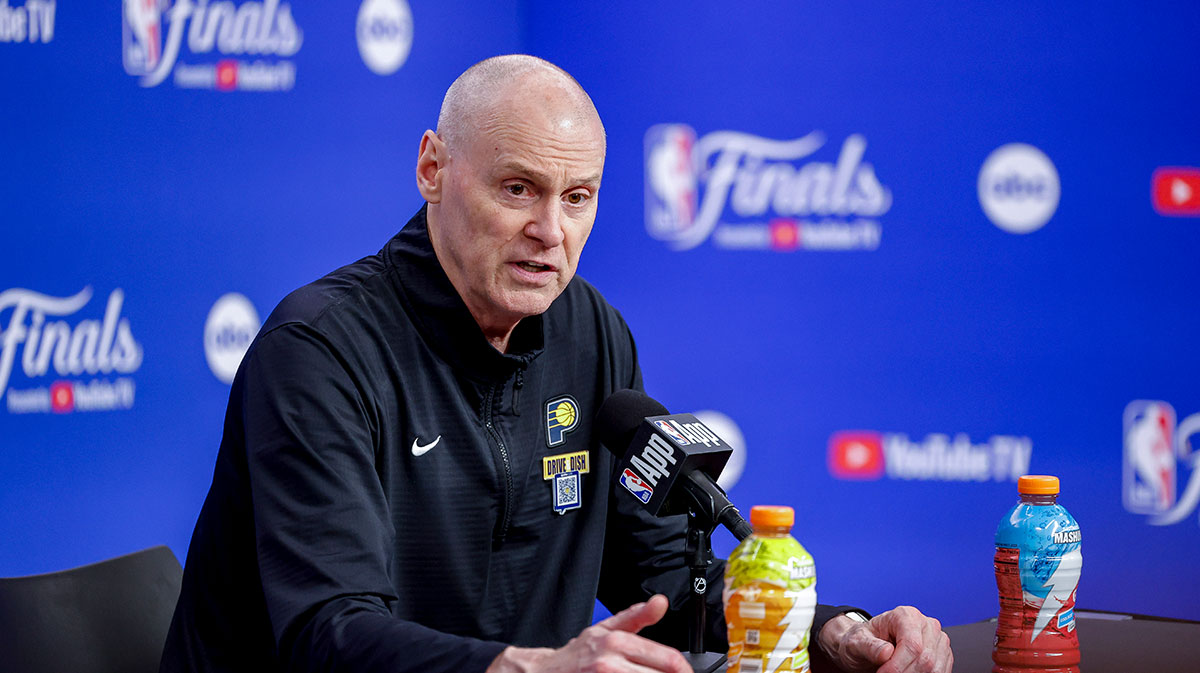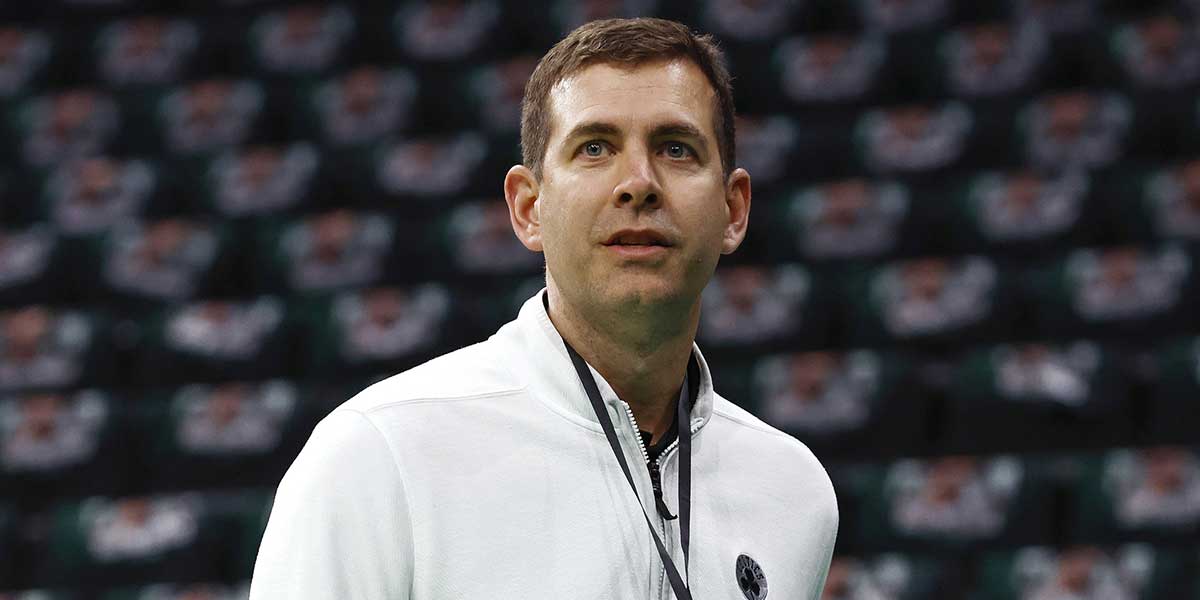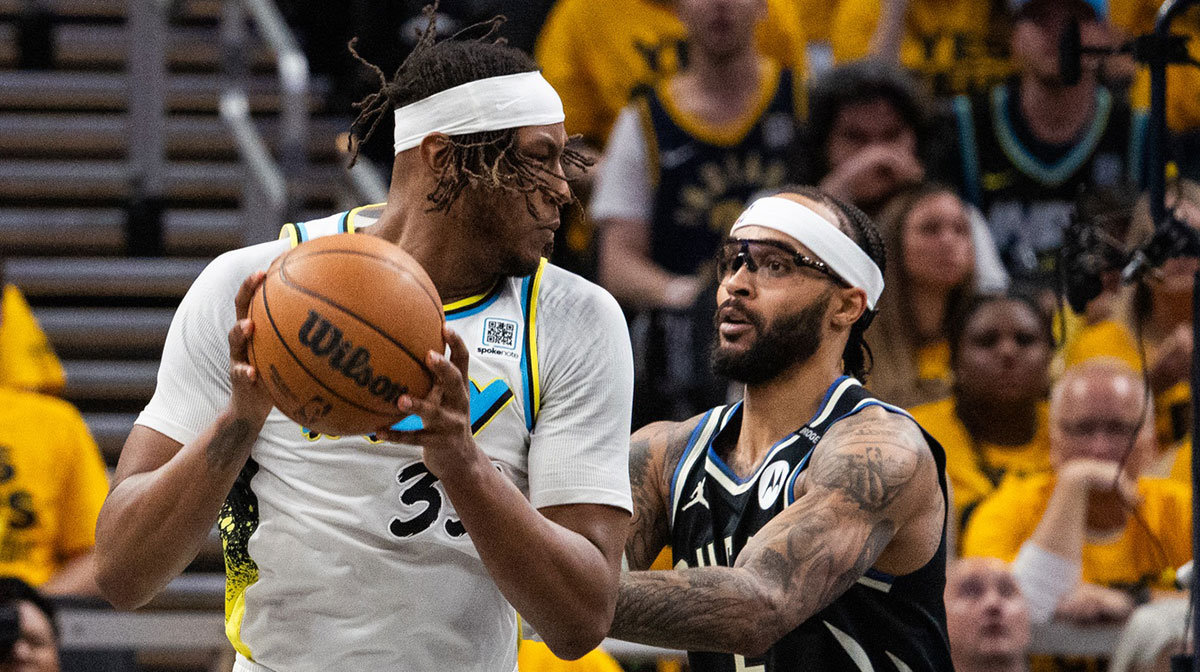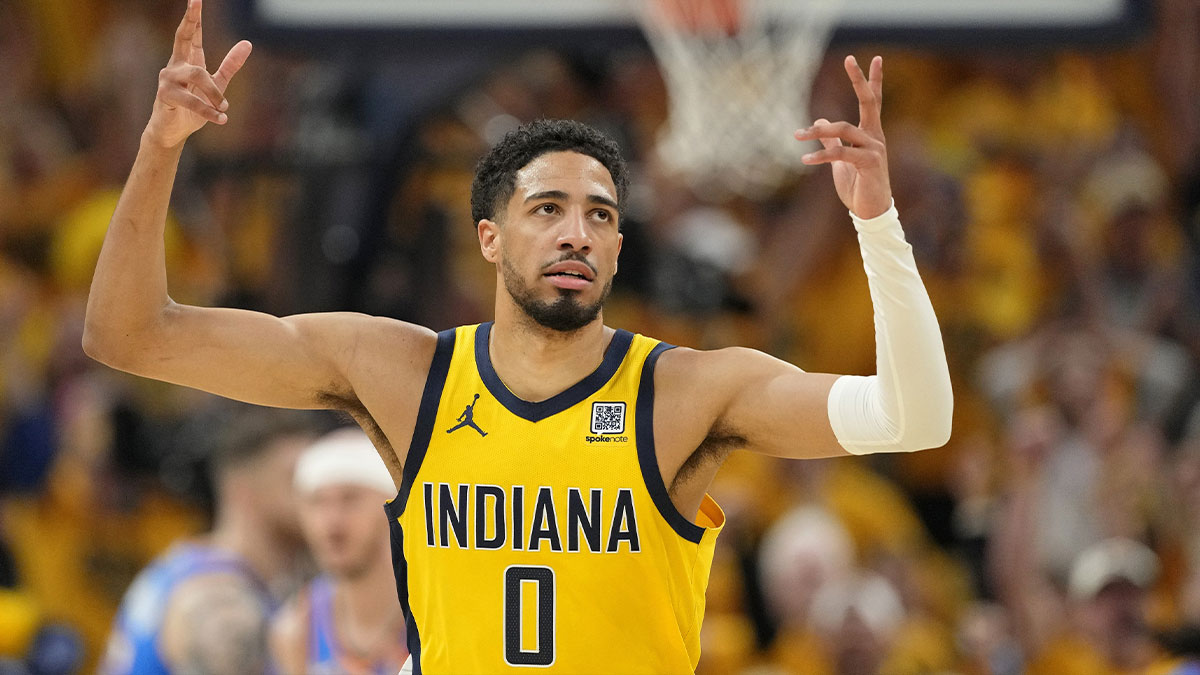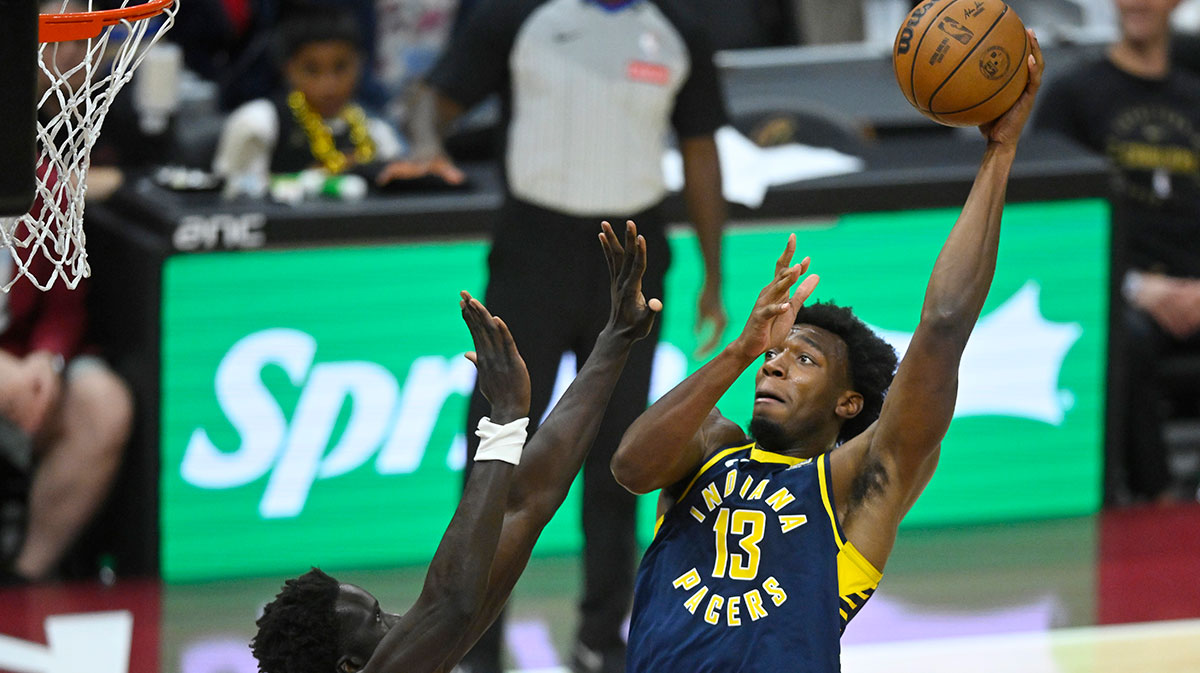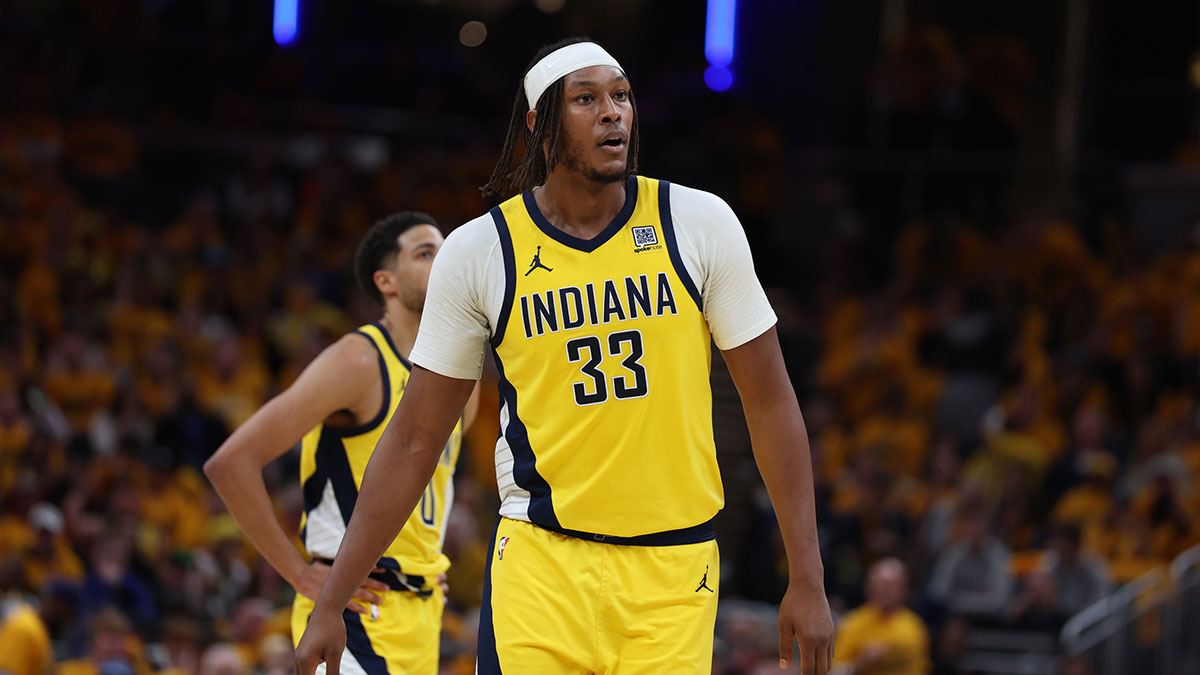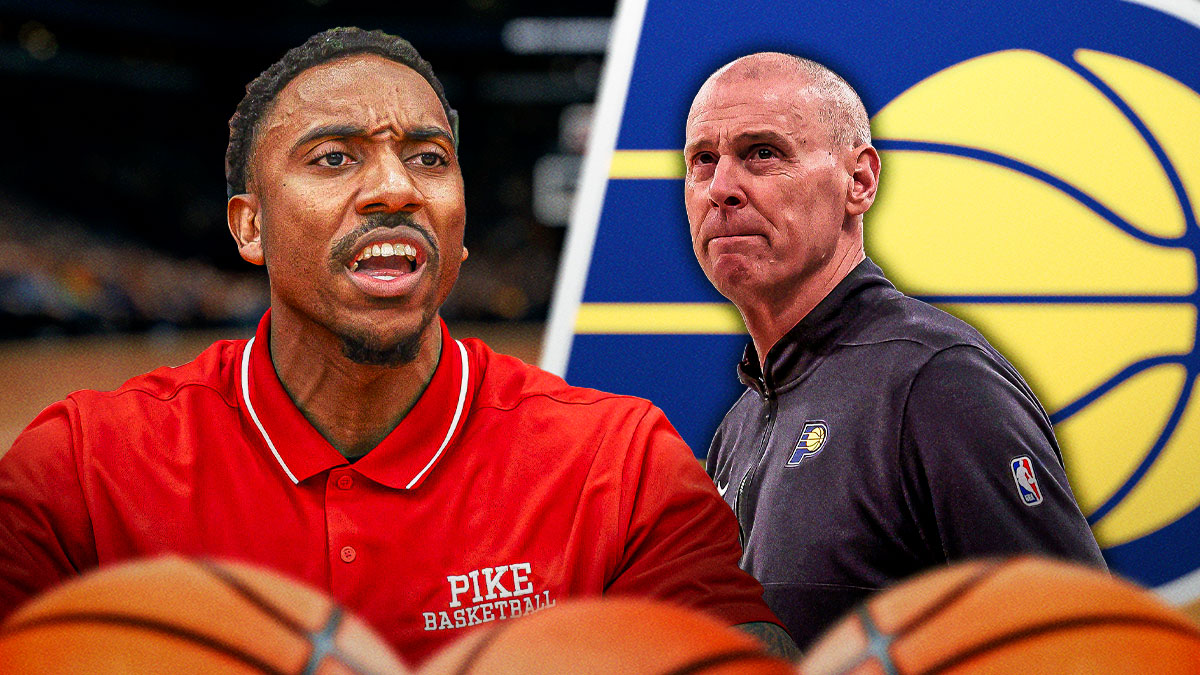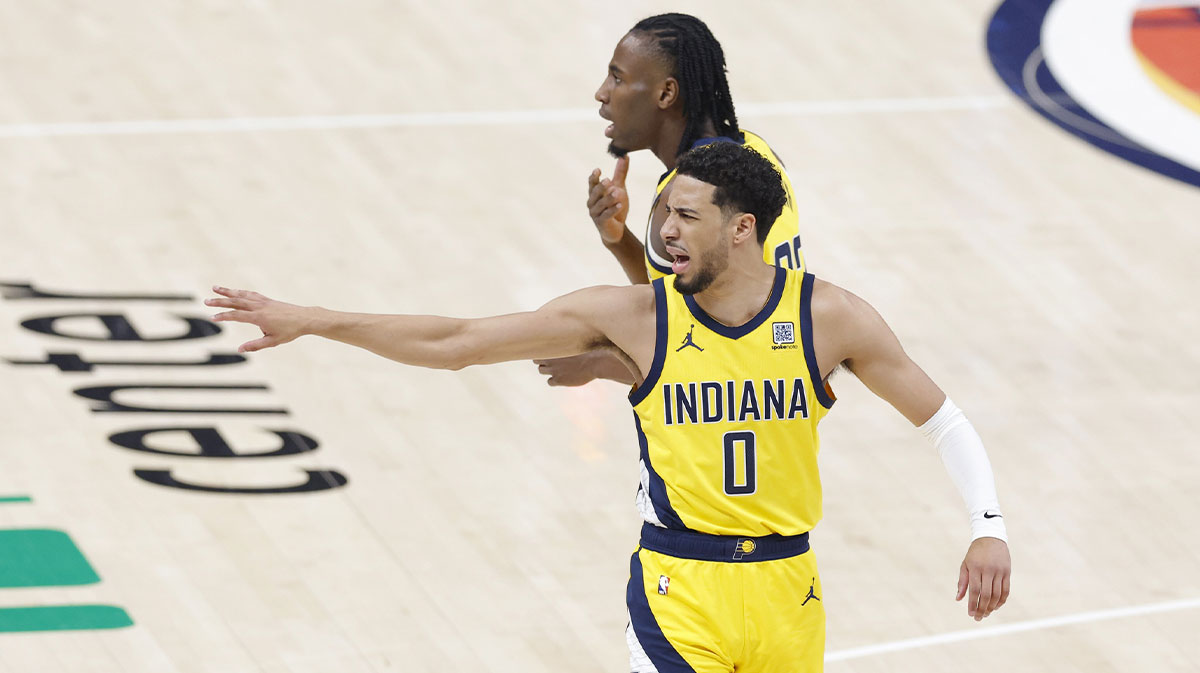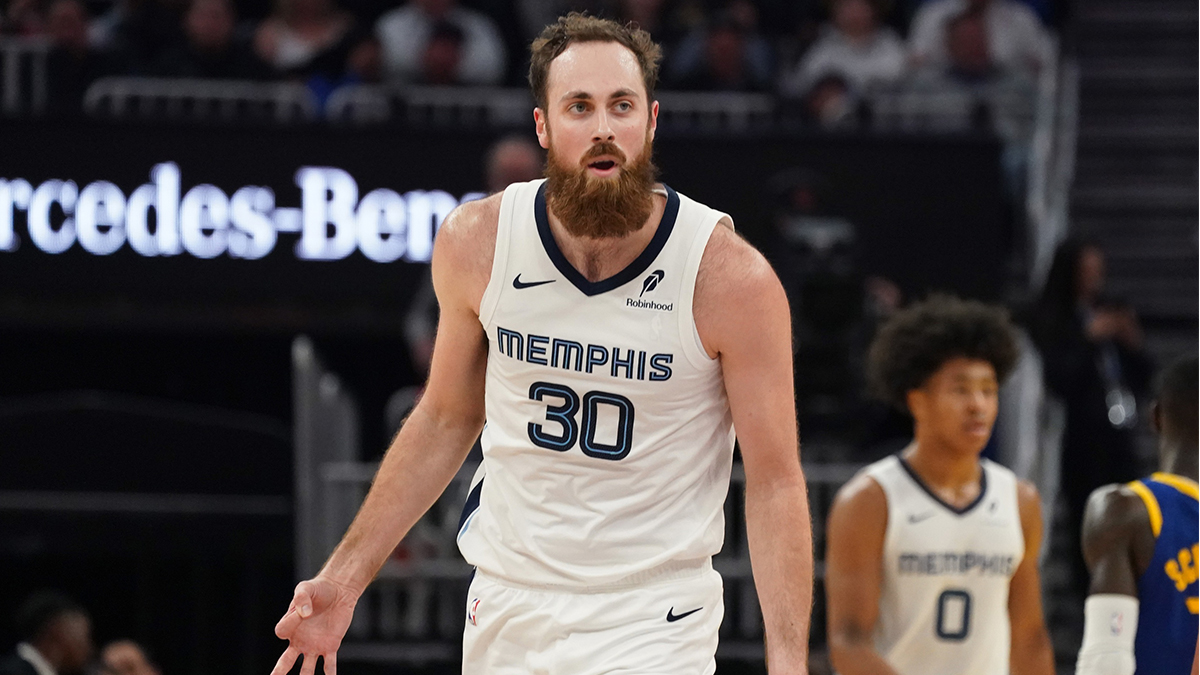The center position has had a long history of dominance in the NBA with legendary figures such as Kareem Abdul-Jabbar, Wilt Chamberlain, Bill Russell, Hakeem Olajuwon, and Shaquille O’Neal all having an argument for being in the top ten players of all time. The league has seen a serious shift away from centers who focus on low-post scoring in the past few seasons because of the three-point revolution and small ball’s dominance.
The perfect example of this trend is obviously the Golden State Warriors who played Draymond Green and Kevin Durant at the slot around 25 minutes a game during the postseason last year. Javale McGee and ZaZa Pachulia only played about 23 minutes at the five for the Warriors last postseason. Essentially, the Warriors played without a traditional center over half the game during the playoffs, and it was dazzlingly successful (having four All-NBA caliber players to switch on defense might have something to do with it though).
With all that being said, let’s get to my rankings for 2017’s top ten NBA Centers, players who are attempting to bring back the Center position into the limelight with their size, shooting prowess, creativity, and defense (or lack thereof in some cases).
10 – Myles Turner

If you are interested in an in-depth look at Turner’s career thus far, it is highly recommended for you to check out Frank Nolan’s discussion of the history of the Pacers franchise in the modern era and Turner’s role moving forward. For our purposes, there is little questioning Turner’s prowess on the defensive end of the floor as he has quickly established himself as a very good shot blocker, averaging 2.1 swats per game last season.
Turner’s impact goes beyond blocked shots since he is very adept at using his lengthy, yet nimble and wiry frame to stay in front of smaller players on pick and rolls, allowing the Pacers to switch on defense more often than other teams. What holds Turner back from a position higher on this list is his offensive contributions. Last season, Turner only averaged 14.5 points per game with a usage percentage south of 20 percent.
Even worse, Turner has played some of his worst ball when games matter the most (in the playoffs), posting a horrific -5.0 offensive box plus/minus in his first postseason, and an even worse -7.0 against the Cavs last year. Shooting nearly 10 percent worse from the field during the playoffs than he averaged over the course of the season, Turner’s poor showing was one of the biggest factors in the Pacers being swept by the Cavs.
With Paul George gone, Myles Turner has indeed become Indiana’s most important and best player, but there is a reason most pundits expect the Pacers to miss the playoffs next year. To prove them wrong, Turner will have to demonstrate that he is more comfortable taking on a larger role in the offense and converting his opportunities more efficiently. Fortunately, Turner did improve dramatically from his rookie to sophomore season so if he can duplicate that trend the Pacers are in good shape.
9 – Brook Lopez

Brook Lopez is another five-man who can score in a plethora of ways and, unlike some offensively elite bigs, he doesn’t cost his team on the defensive end. While he isn’t the most mobile guy on the floor, he typically uses his 7-foot 275-pound frame to disturb shots at the rim. Lopez’s real value comes on the offensive end where he has a complete array of post moves and can score on either block and with either hand.
What makes Brook Lopez special is that, unlike some centers such as Rudy Gobert, he doesn’t need to get all the way to the basket to score. One of Lopez’s trademark moves is to back down a defender, baiting him to get lower to prevent him from bullying his way to the hoop. As Lopez feels the defender back down, he quickly turns around and easily floats a hook shot over the now-shorter defender who cannot contest quickly enough.
Earlier in his career, Lopez wasn’t as big a headache for defenders since they could pack the paint against him or frequently send double teams to slow him down. Admittedly, this is still an effective strategy against Lopez since he is a poor passer, averaging more turnovers than assists last season. However, Lopez, like Gasol, developed a 3-point shot last season. The Lakers are very excited about the floor spacing he will offer them for the upcoming season and are optimistic that he will improve on the 34.6 percent clip he converted at last year.
Brook Lopez is still very injury-prone and does not offer as much lateral quickness as you’d ideally like from a rim protector which helps explain why he isn’t higher on the list, but Lopez remains one of a dying breed in today’s NBA as an efficient big man that a team can run its offense through if devoid of shot-creators like the Nets were last season.
8 – Hassan Whiteside

Hassan Whiteside’s story is one of the league’s most incredible as he went from playing pickup ball at the local YMCA straight to becoming one of the NBA’s premier shot blockers and a worthy holder of the eighth spot on this list. While Whiteside has clearly used his early stage setbacks as fuel to fire up his game, some pundits have argued that the defensive menace has taken things too far by chasing sexy looking stats to the detriment of his team.
In the 2015-2016 season, Whiteside would often lose defensive discipline to chase elite shot blocking numbers which resulted in him leading the league in swats with 3.7 despite only playing 29.1 minutes per game. To be fair, Whiteside’s strategy helped put him on the map as a household name amongst league circles and certainly helped him earn a massive four-year, $98 million deal signed last offseason. Given the way things have played out for Whiteside, it is hard to blame him too much, but his selfish desire for stats did often hurt the Heat that year by leaving lanes open for other teams to utilize.
Head coach Erik Spolestra, one of the smartest minds in the game admitted that Whiteside’s constrained numbers from last season actually demonstrated that he was playing more responsibly on defense. For instance, while Whiteside’s blocks dipped from the insane 3.7 total to 2.1 per game last season, he led the league in rebounds with 14.1 up from 11.8 in 2015-16. With Hassan Whiteside’s role in the offense increasing each year, he has a chance to cement himself as one of the most dominant two-way bigs in the near future.
7 – Joel Embiid

Joel Embiid is underrated simply because he can’t stay healthy. Sixers fans have reason to hope for the playoffs soon if Embiid can put his injury woes behind him for good. Embiid’s stats last season were even more impressive than his social media presence as the 7-footer averaged 20.2 points, 7.8 rebounds, and 2.1 assists, on top of 2.5 blocks per game in only 25.4 minutes. The last stat is the most impressive because many players could average 35 minutes a game and not dream of putting up those statistics.
Embiid also had a 24.2 PER (Player Efficiency Rating) last season, tied for 16th in the league with Damian Lillard — except Lillard played 36 minutes per game last season and PER heavily favors players with more minutes. The only center with a PER higher than Embiid was Karl-Anthony Towns, and the latter played twelve more minutes per game. If Embiid could lose his minutes restriction and remain healthy (big ifs thus far), he could easily prove himself to be worthy of a Top 5 ranking.
Joel Embiid only played 31 games last season, but in those nights, the Sixers were 13-18. The Sixers finished the season 28-54, winning only 15 more games while losing 36. Their roster last year was devoid of efficient basketball talent outside of Embiid and Richaun Holmes, the only two Sixers players in the top 100 in PER (Holmes was 60th with an 18.61 PER).
The fact that Embiid managed to go 13-18 with that roster is impressive in itself. His player profile is what makes scouts and general managers drool and dream of high draft picks. Embiid is a legit seven-footer who finished second in the league in blocks despite playing eight fewer minutes per game than Gobert. Embiid has graceful footwork and his moves and fakes are extremely reminiscent of Hakeem Olajuwon. Unlike Olajuwon, Embiid can even shoot three-pointers. He attempted 3.2 shots per game from beyond the arc and connected on 36.7 percent of them. Towns, Cousins, Gasol, and Embiid are all centers on this list revolutionizing their position with decent three-point range and rim protection abilities.
Other stats showing just how valuable Embiid was to the Sixers include his plus/minus numbers. With Embiid on the court, the Sixers had a net rating of +3.2. But with him off the court, the Sixers’ net rating plummeted to -11.8 — a difference of 15 points per 100 possessions from one player alone. When Embiid touched the court, the Sixers played like a 50-win team, but with him on the bench, they played like a 14-win team.
6 – Marc Gasol

For the past nine seasons, Marc Gasol has been the player that Joakim Noah has dreamed he would become but never fully actualized. Gasol offers all of the fantastic and unique attributes that Noah possessed such as elite passing ability for a big and a very high motor and knack for hustle plays.
Gasol’s 4.6 assists and 0.91 steals per game rated third and sixth, respectively, amongst centers. Even better for Memphis, unlike Noah, Gasol has never had trouble with his free throw percentage (or form) hitting 77 percent for his career with a career-high of 83.7 percent last season.
Even better, like many players above him on this list Gasol is now a respectable perimeter threat having finally developed a three-point shot last season. Despite never attempting over 0.2 threes per game before last year, Gasol found immediate success from downtown hitting 38.8 percent on 3.6 attempts per game. This is insanely impressive for a guy who was already an elite two-time All-Star without the three-point shot in his arsenal.
Having already made over $100 million in his career, it would have been easy for Gasol to remain content with his game and phone it in for the rest of the year on a good but not great Grizzlies team that has never been (and likely never will in the age of the Warriors) a true, legitimate championship contender. However, that is not the type of player or person Gasol is. He gives 110 percent every night unlike many star players who take regular season games off by not giving full effort.
With Marc Gasol, if he’s out you know he’s very likely injured. Gasol’s attitude has permeated throughout the Grizzly locker room and franchise making them one of the league's biggest overachievers of the modern era. Despite the stacked nature of the Western Conference over this period of time, the Grizzlies have never faltered; like clockwork they have been there each year, making the playoffs the past seven seasons, all with Gasol as a central figure.
No matter how talented they are, none of the West’s top seeds ever want to see these guys in the playoffs since you know the series is going at least six if not seven games. In fact, with the exception of a rare sweep by the Spurs two years ago, the Grizzlies have at least forced a first round game six every year. When you compare that to the utter dominance LeBron James has displayed on the Eastern side of the bracket, this feat is worthy of recognition.
Click “Next Page” to see the rest of the list!
5 – Karl-Anthony Towns

Karl-Anthony Towns is on this list because of how gifted he is on offense which is actually surprising given how many draft analysts predicted that he would have an immediate impact on defense, but would be a work in progress on the other end. The roles have reversed in the NBA where Towns has destroyed plenty of defenders, but has been owned on defense an equal number of times.
If Towns’ defensive mechanics were to develop in tandem with his prodigious offensive skills, Towns would be on top of this list. He is only 21 years of age, a baby in terms of NBA experience. However, in 37 minutes per game last season, Towns averaged 25.1 points, 12.3 rebounds, 2.7 assists, while also adding 1.3 blocks per game. Towns’ offensive game is mind-blowing as he has great touch around the hoop and astonishing footwork for a guy who stands seven feet tall.
Additionally, Karl-Anthony Towns has 3-point range, making it even tougher to guard him on the perimeter where other centers aren’t used to defending. Last season, Towns attempted 3.4 attempts from downtown converting on 36.7 percent of them, forcing opponents to respect his range, and of course, opening up more space in the paint for Andrew Wiggins and other teammates to slash into. Though Towns isn’t the passer that Nikola Jokic and DeMarcus Cousins are, he is still decent at finding open teammates and he scores more points in a more efficient manner than anyone else on this list.
Other teams should be wary of the Spooky Timberwolves if Wiggins and Towns manage to develop on the defensive side of the ball. The reason Towns isn’t higher on this list as mentioned earlier is because his defensive metrics are absolutely abysmal. Last season, Towns was the only center in the NBA’s top 30 at this position (in terms of RPM) with a negative Defensive Real Plus Minus, a statistic widely considered to be one of the best in terms of indicating a player’s value to their team. Last season, Towns clocked in at a -1.41 DRPM. The only other Center in the top 40 with a negative DRPM was Frank Kaminsky (a notoriously porous defender) who scored a -0.51 DRPM.
With all that being said, Karl-Anthony Towns is a young offensive machine who has all the makings of a superstar.
4 – Nikola Jokic

Nikola Jokic is a name that casual NBA fans probably haven’t heard. However, Jokic is a name fans should get used to hearing moving forward because of what he did last season after the Nuggets traded away their other disgruntled starting center, Jusuf Nurkic, to the Blazers in order to free up more minutes for Jokic to run the show. Run the show he did, because Jokic, despite only starting in 59 of the 73 games he played in last season, led the NBA at the center position in Real Plus Minus over names like DeAndre Jordan, Rudy Gobert, and DeMarcus Cousins.
When the Denver Nuggets played with Jokic on the court, they were a completely different team with multiple players attesting to the fact that playing with him made it easy to keep moving on offense, running and cutting non-stop for the entirety of the shot clock knowing that if they were open for even a millisecond, Jokic would find them. The young Serbian's forte is his overall offensive game since his size allows him to score in the low post via a myriad of moves and fakes, as well as the ability to hit hook shots with either hand, or distribute to cutting teammates and open shooters from the high post.
Statistically, Jokic was the best center in the league last season because he was able to outproduce offensive powerhouses such as DeMarcus Cousins and Karl-Anthony Towns, despite his stats not looking nearly as impressive because he only played 28 minutes per game, which pales in comparison to Cousins' 34 or Towns' 37. In the relatively short time he was on the floor for each game last year, Jokic produced 16.7 points, 9.8 rebounds, and 4.9 assists per game, all while shooting an impressive 57.8 percent from the field. Unlike many other players on this list, Jokic is excellent from the line, shooting 82.5 percent from the charity stripe last season, so he isn’t a detriment to his team when he gets fouled.
For all of his offensive gifts, Jokic is a flawed defender (which probably wasn’t helped by his being overweight and out of shape for most of the season) who struggles to defend smaller and quicker players, especially when he is placed in pick and roll situations. Jokic isn’t super athletic or incredibly long like many of the other players on this list, but his potential is mile-high (pun intended) and he deserves to be No.4 on this list.
3 – DeMarcus Cousins

DeMarcus Cousins is high on the list of most entertaining players to watch not only because of his attitude, but also because of his diverse game for a big man. Cousins averaged 27.8 points, 10.6 rebounds, 4.8 assists, 1.4 steals, and 1.3 blocks per game. Cousins’ stats tell you almost everything. Despite being an undersized center, Cousins can score the ball in a plethora of ways: he can post up, handle the ball with a grace that belies his monstrous size, and score from mid-range or even from three now.
Last season, Cousins expanded his game by attempting over five 3-pointers per game and connecting on 37.5 percent of those attempts, drawing the opposing team’s big man and shot blocker out of the paint, and leaving more room for his teammates to drive or work in isolation without being double-teamed.
Speaking of being double-teamed, Cousins is a great passer at his position, averaging nearly five assists per game (a number that would be a bit higher if his teammates not named Anthony Davis could reliably knock down open shots). Cousins’ size allows him to bully smaller power forwards and centers in the post, using his weight to back down a defender deep into the paint, forcing rotations and help defenders, or leaving Cousins an easy kickout to his teammates for quality 3-point looks that often don’t go down, because the Pelicans’ best outside shooter outside of Cousins is E’Twaun Moore, a guy who shot 37 percent from beyond the arc last season, but on a lowly 2.8 attempts per game. The other top 3-point shooter on the roster for the Pellies is Jrue Holiday who shot 35.6 percent from downtown last season on 4.2 attempts.
If the Pelicans want to utilize the large size and skill gap between their big men and other teams', they are going to have to find better outside shooting from somewhere (probably improvements from within their own) so that double teams don’t come the second Davis or Cousins faces up or takes a single dribble.
2 – Rudy Gobert

Rudy Gobert ranks second on this list simply because of how much he impacts the game from a defensive standpoint. Gobert boasted an absurd 6.02 Defensive Real Plus/Minus (Real Plus Minus in this case is the number of points Gobert saves the Jazz per 100 possessions), which is even higher than Defensive Player of the Year, Draymond Green who had a 5.59.
However, unlike Draymond Green who also had Klay Thompson and Kevin Durant (two great lockdown defenders) helping him on defense, Gobert had few teammates on the Jazz to help him in this regard. Gordon Hayward, Rodney Hood, Derrick Favors, Joe Johnson, Joe Ingles, and Alec Burks are all net minus defenders, and Gobert had to cover up for all of their defensive mistakes.
Additionally, Gobert has displayed some improvement with his offensive game, scoring 14 points per game on 66 percent from the floor — mostly on lobs and attempts within three feet of the rim. Gobert is extremely effective in his offensive role with the Jazz, setting great screens and crashing the basket for lobs, offensive boards, and putbacks. Gobert has also improved on his free throws, hitting 66 percent from the line last season and improving on his career 61 percent from the charity stripe.
Gobert and DeAndre Jordan are the most traditional centers on this list, but Gobert will go much further and is ranked higher because he shoots so much better from the line and is also a better defender. He also averaged a tidy 12.8 rebounds and 2.6 blocks per game last season.
In terms of estimated wins added, Rudy Gobert was sixth in the league at 15.55 behind LeBron James (20.43), Stephen Curry (18.8), Jimmy Butler (17.35), Russell Westbrook (17.34), and Draymond Green (16.84). That means Gobert added approximately 16 wins worth of value to the Utah Jazz last year by himself. His defensive impact and offensive improvements land him the number two spot in these rankings.
1 – Anthony Davis

Anthony Davis is an absolute physical specimen with a body made for basketball. Davis stands 6-foot-11 and has a wingspan of 8-feet. For reference, Kawhi Leonard and Kevin Durant have wingspans of 7-feet each. Davis utilizes those measurements to dominate his opposition on both offense and defense.
On offense, Davis can do it all with the exception of 3-pointers. He can post up and score easily using his size and length, and his perimeter game inside the arc is beautifully fluid to watch yet still lethal since opponents are forced to leave him open mid-range shots for fear that he blows by and dunks as easily as he blocks a kid’s shot in a commercial. Davis doesn’t have range from outside the arc, but he’s working on that part of his game, and he’s still very young (24 to be exact). He has plenty of room to develop which is scary because he’s already the best center in the league.
Aside from the 28 points per game, 11.8 rebounds per game, and 2.1 assists per game Davis supplied last season, his physical tools also enable the other side of his game: defense. Davis uses his long arms and extremely quick feet to corral defenders where he wants them to go to the tune of 1.3 steals and 2.2 blocks per game. Smaller guards and wings have trouble shooting over Davis’ contests, and he will also allow a player to drive by him if he feels he can stay close enough for the block.
Unfortunately for Anthony Davis, the Pelicans’ front office has not been able to surround him with the requisite talent to win many games in a very loaded Western Conference. But here's to hoping that a full training camp and regular season with DeMarcus Cousins, another name that will be on this list, will launch Davis to new heights with an improved Pelicans team.

